Now, Login to ServiceNow portal with an administrator’s credentials.
Navigate to Manage → Instance.
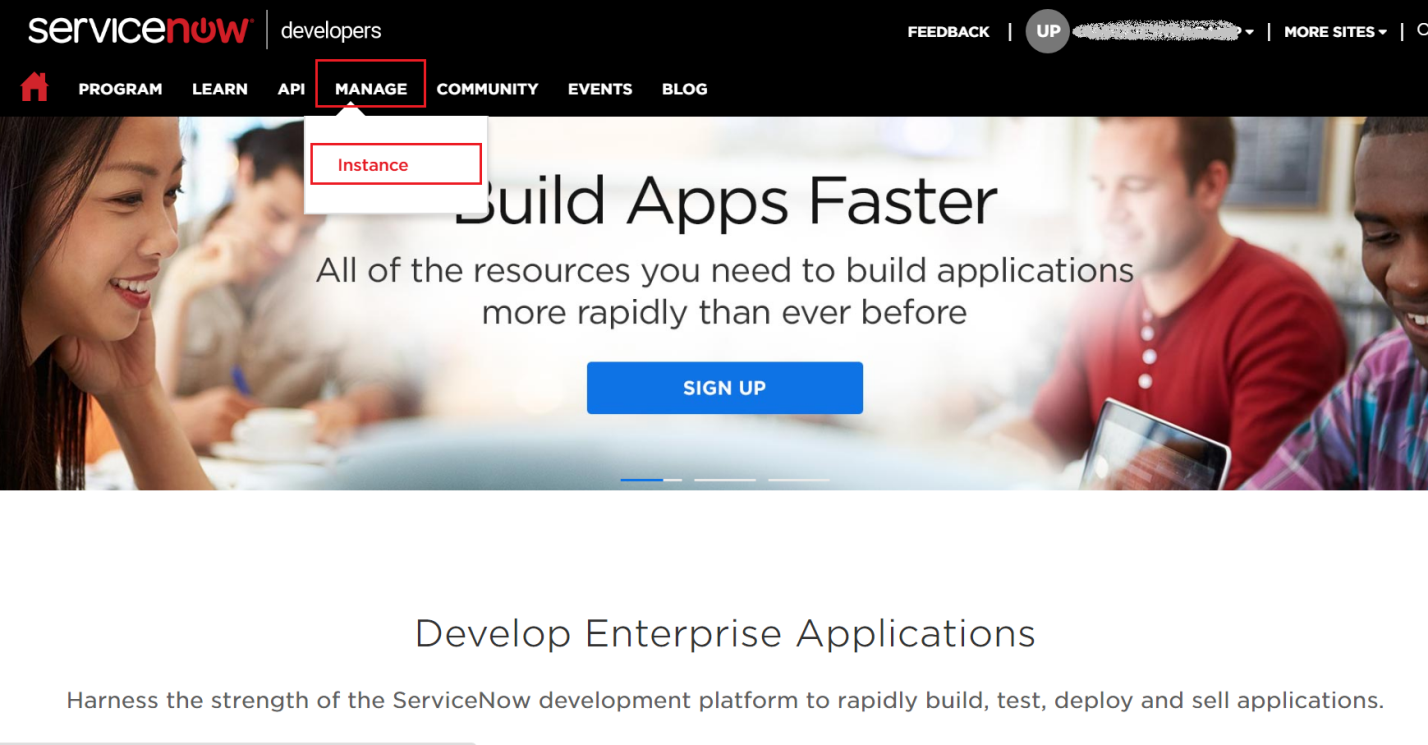
In the My Instance page, click on the instance URL. Also, note down this value. We will need it while configuring ServiceNow with ADSelfService Plus.
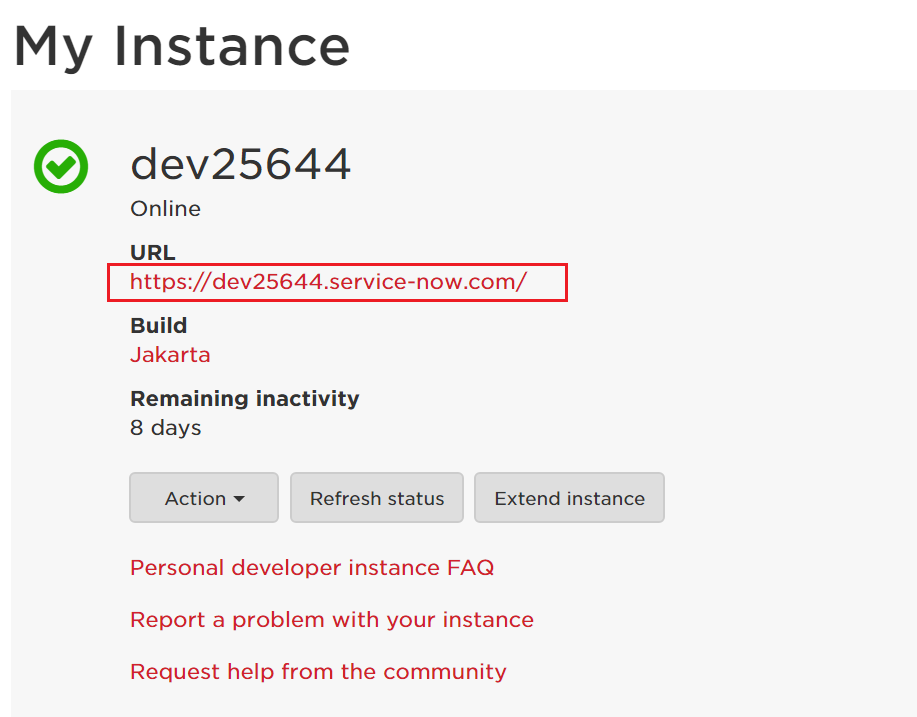
In the left pane, navigate to Multi-Provider SSO → Identity Providers and then click New.
- NOTE : If Multi-Provider SSO plugin is activated in your instance, Please follow this steps
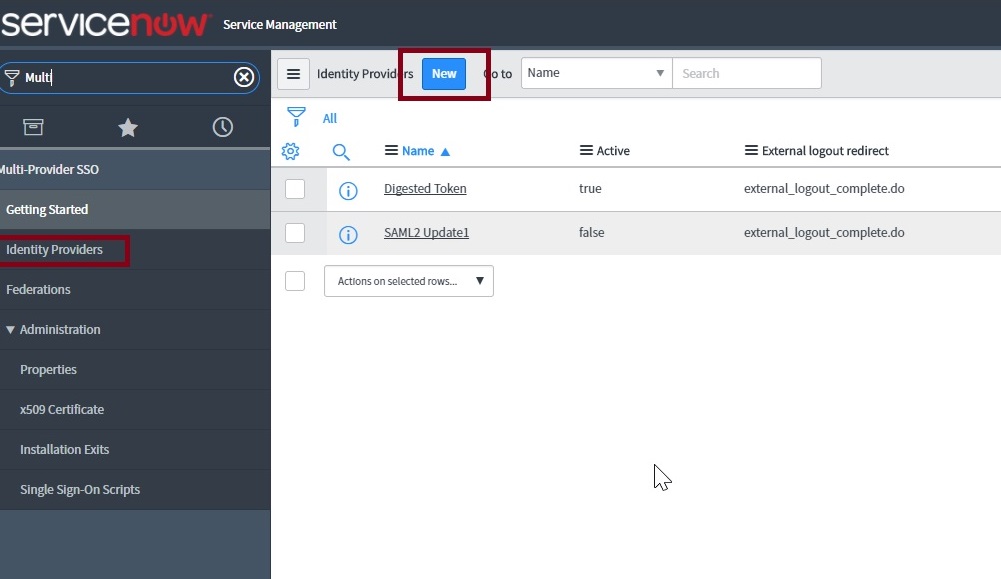
In the What kind of SSO are you trying to create? section, select SAML
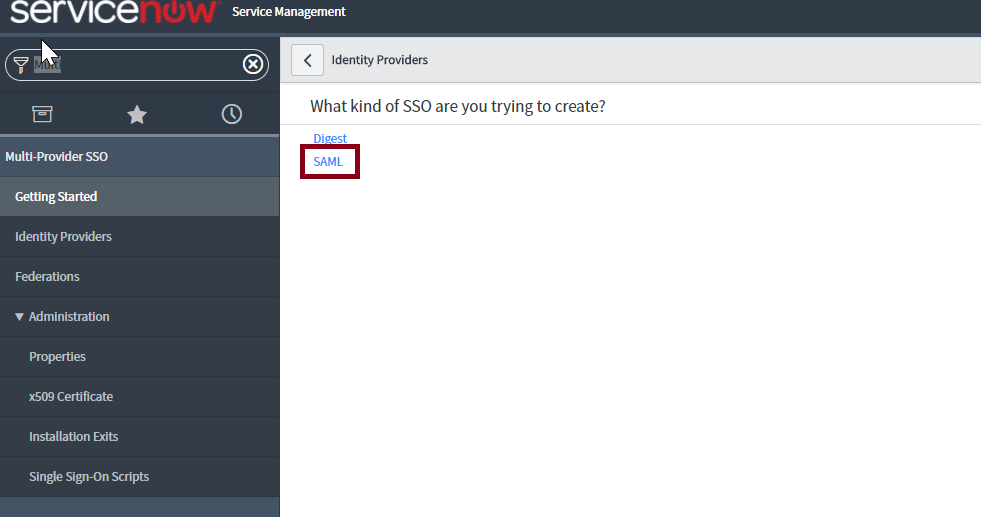
In the Import Identity Provider Metadata pop up that appears, select XML and paste the XML file content you had copied in Step 5 of Prerequisite.
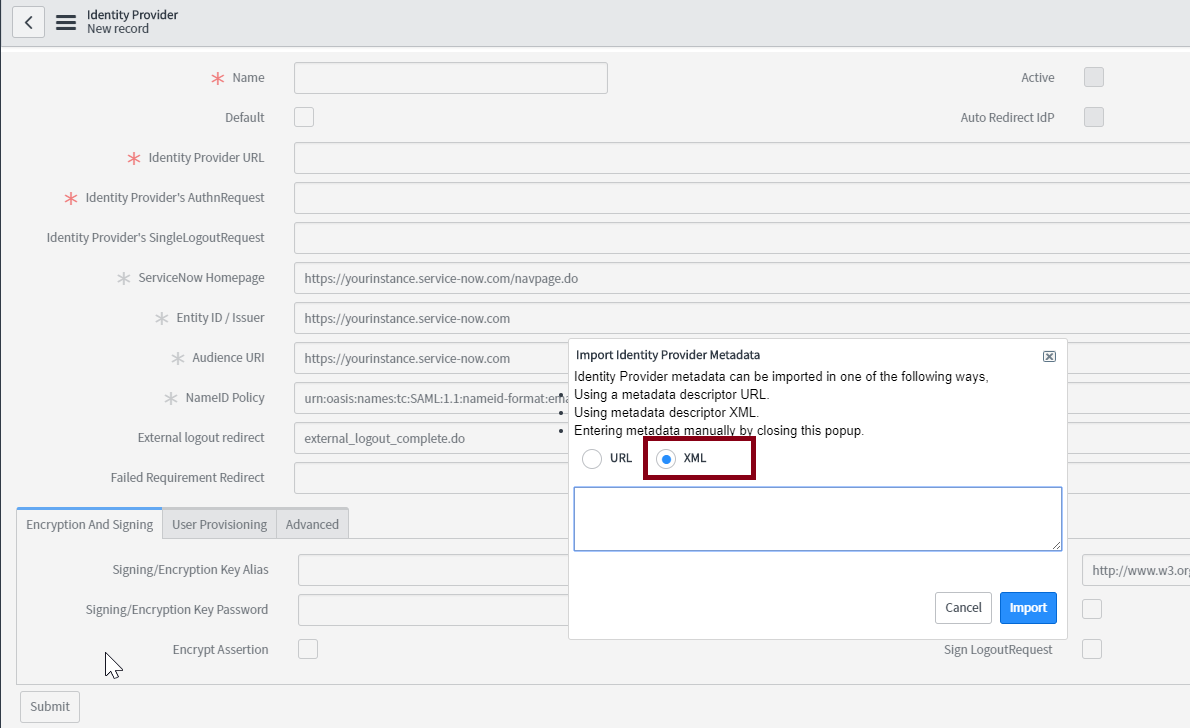
Click Import.
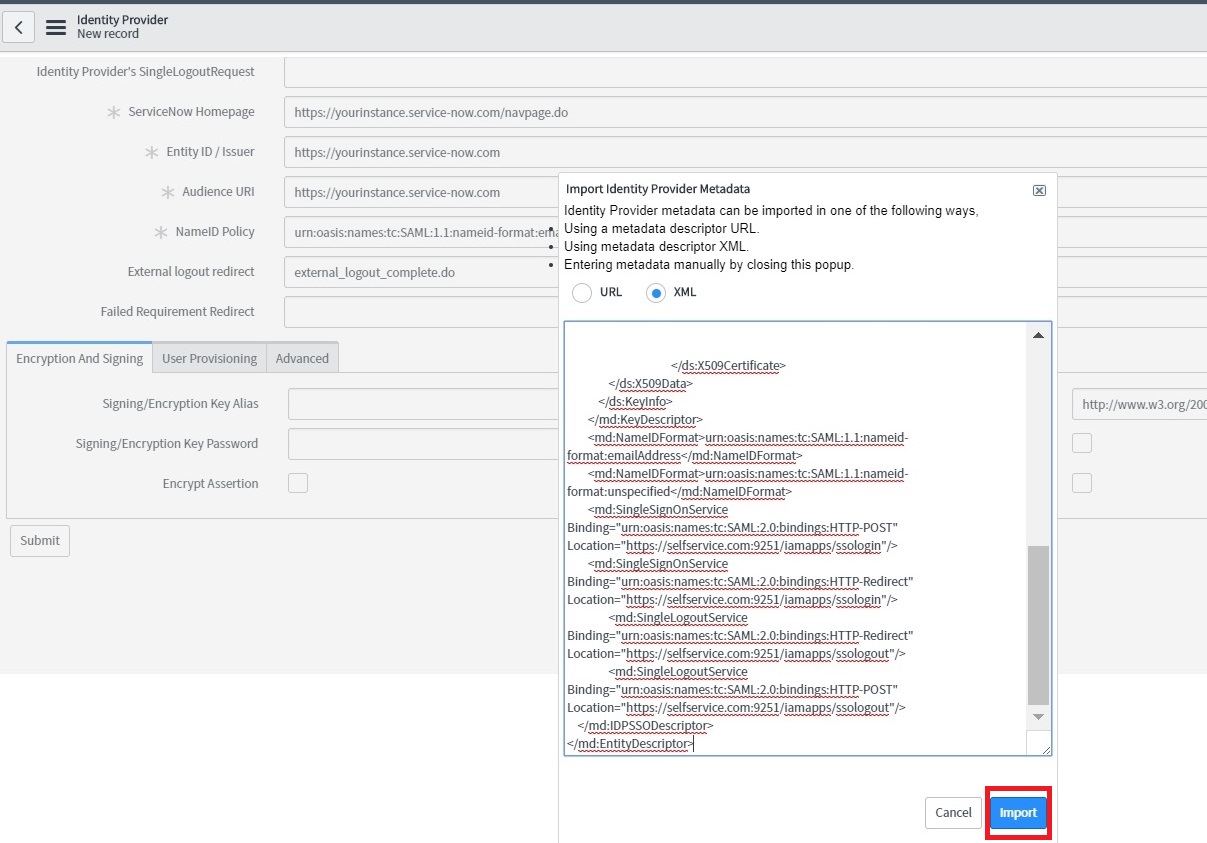
All the required fields will be auto-filled. Scroll down and click Advanced tab. Make sure in the User Field, the value “email” is entered.
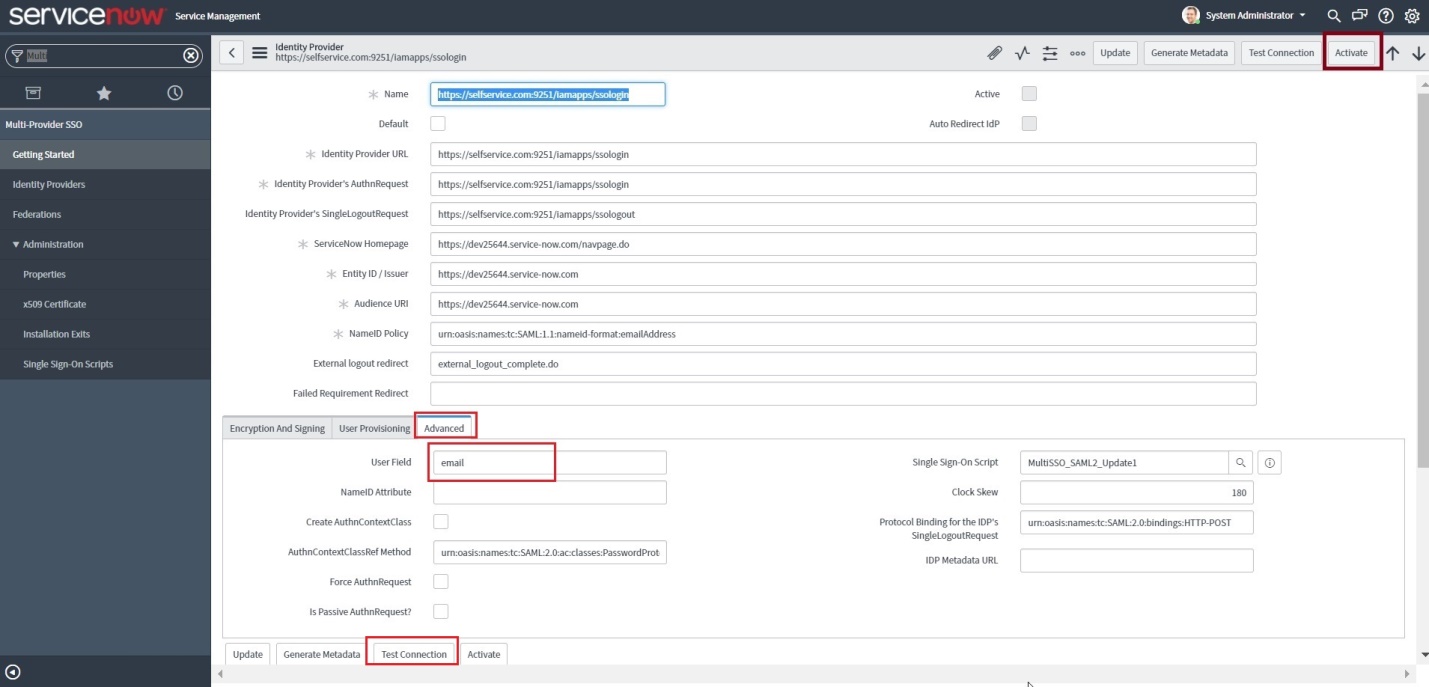
Click Test Connection. You will be asked to log in to ADSelfService Plus.
One the connection is successful, click Activate.
Now click on the Additional Actions icon at the topnear the identity provider and select Copy sys_id. Paste the value in a note and keep it safe.
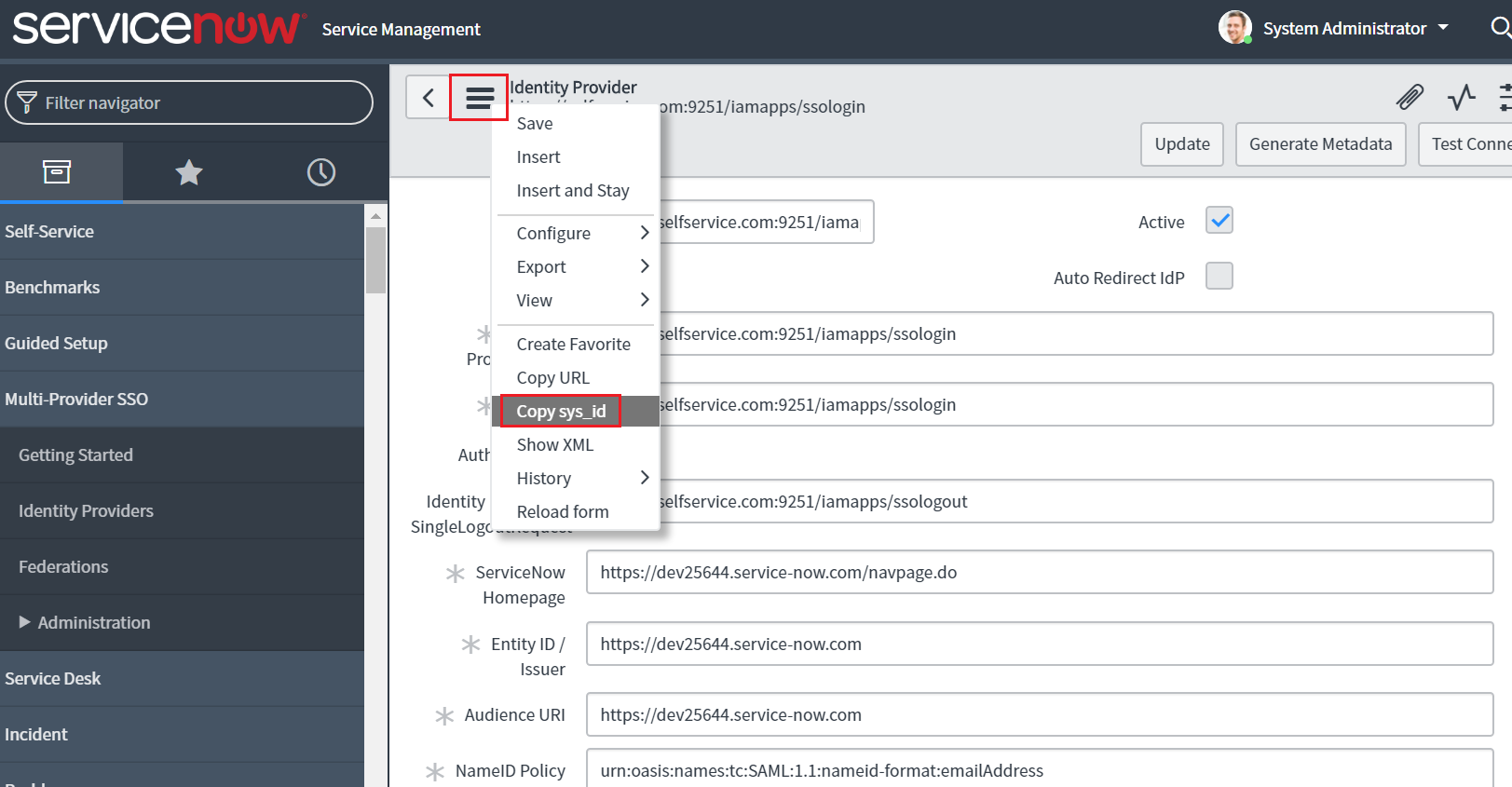
In the left pane, navigate to Multi-Provider SSO → Administration → Properties.
Make sure that Enable multiple provider SSO in enabled.
In the field for user identification, change ‘user_name’ to email as the value.

Click Save.
In the left pane, navigate to User Administration → Users.
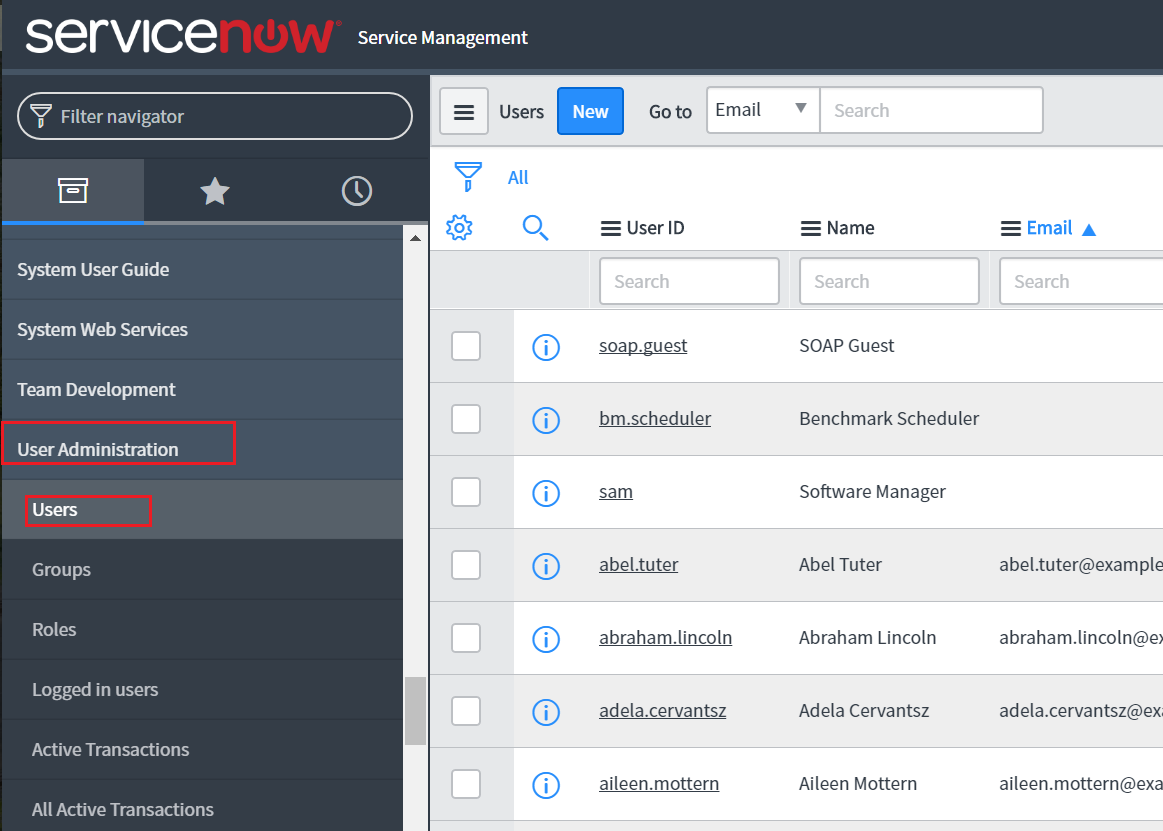
Select a user for whom you want to enable SSO and click his/her username.
Now click the Additional Actions icon and select Configure → Form Design.
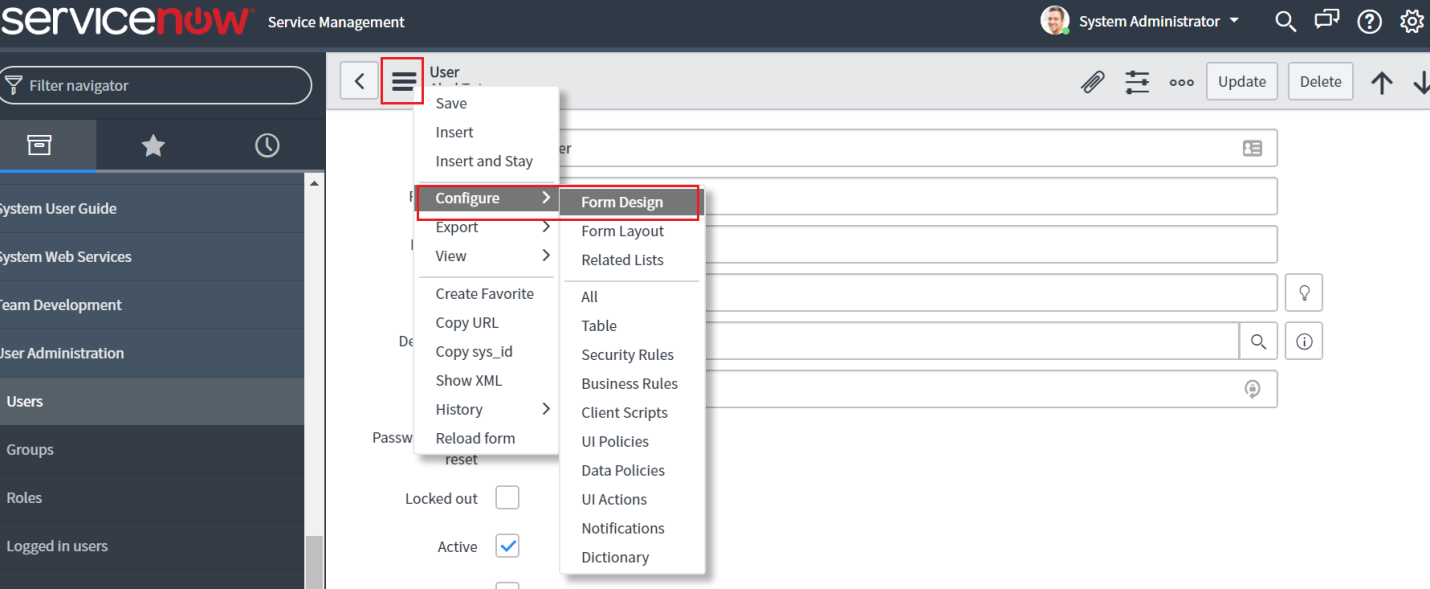
Drag and drop the SSO source field from the left pane into the user’s form and click Save.
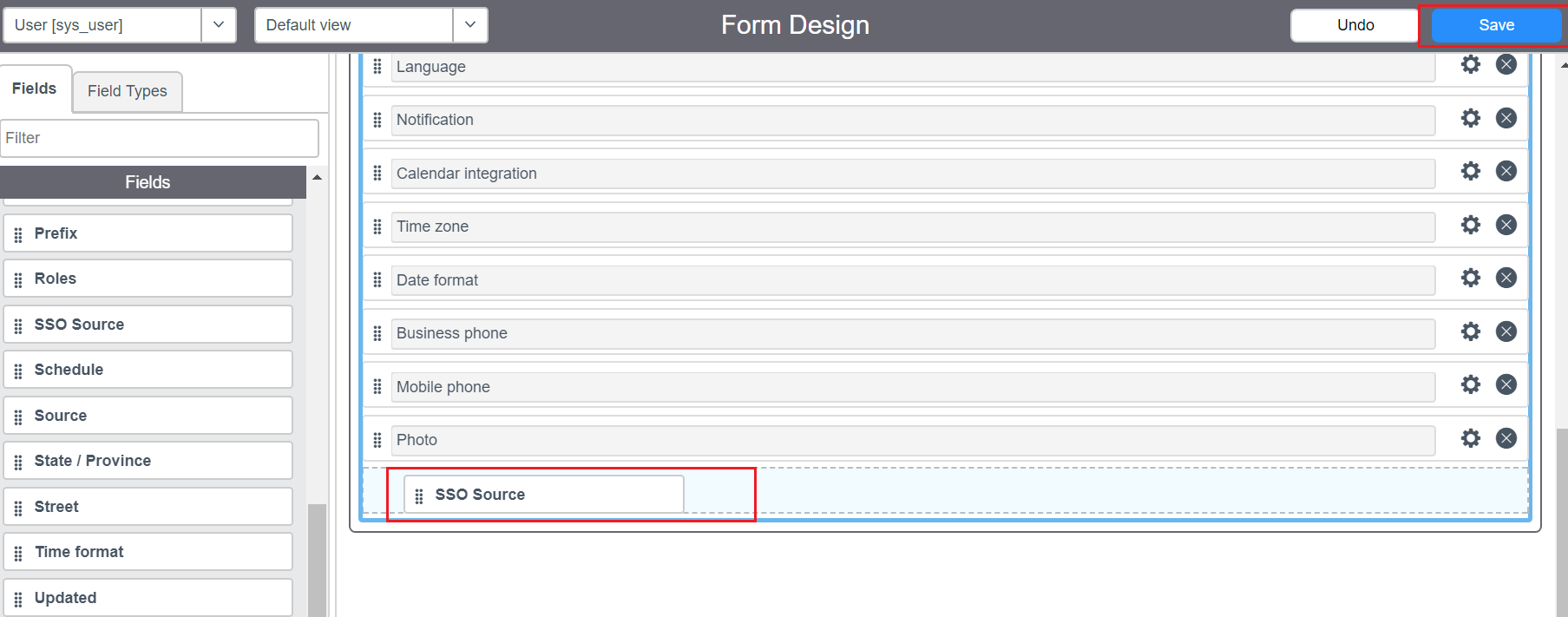
Close the form design tab and go back to the user configuration page. You can notice the SSO source field added to the user’s form
In the SSO source field, paste the sys_id you had copied in Step 11. Append “sso:” before the sys_id value.
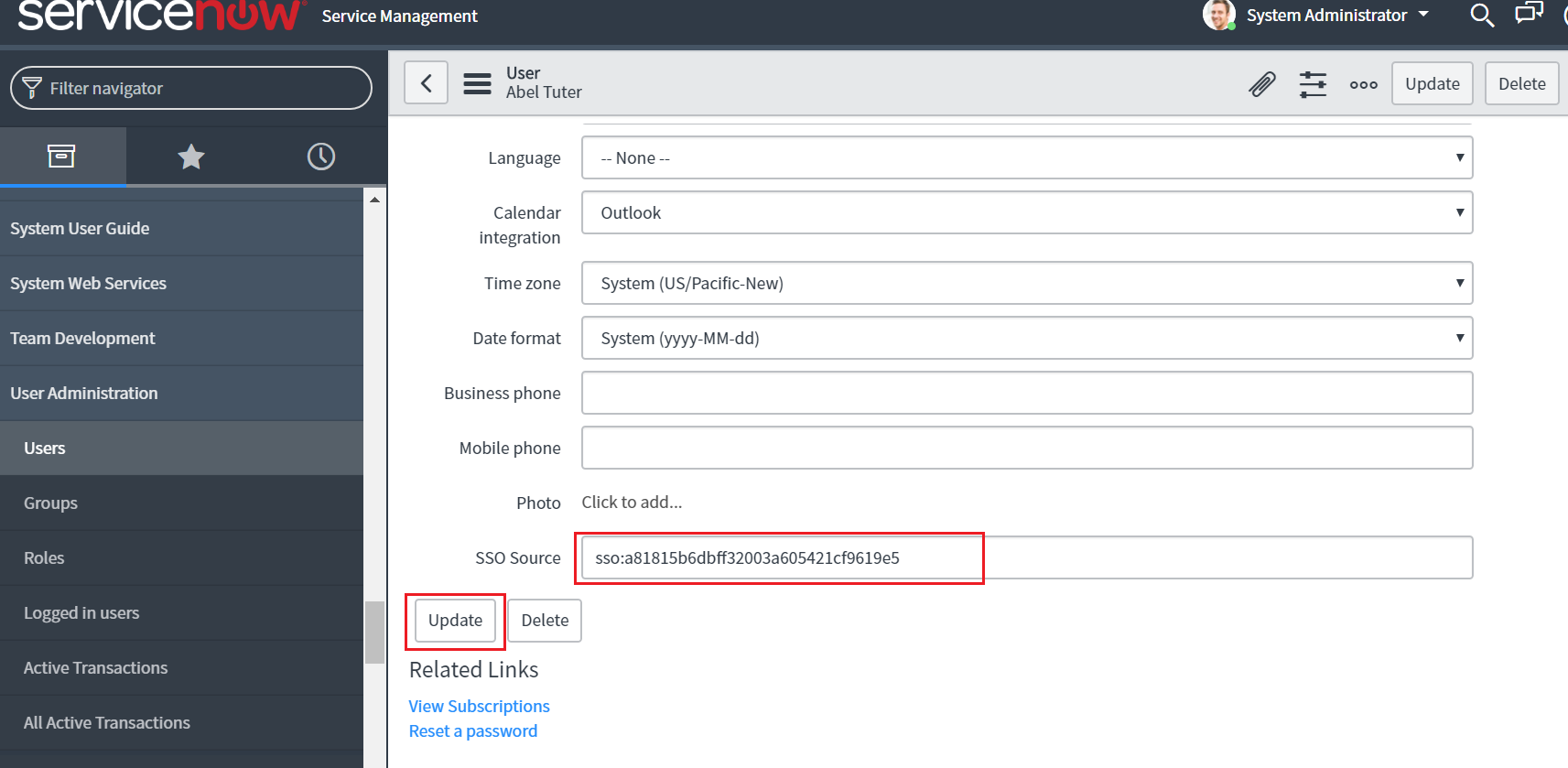
Click Update.
Repeat steps 17-22 for other users to whom you want to enable SSO.